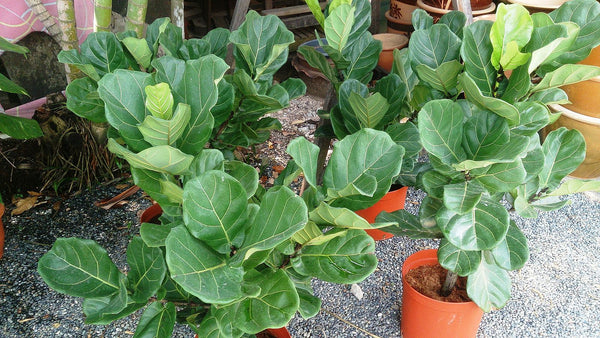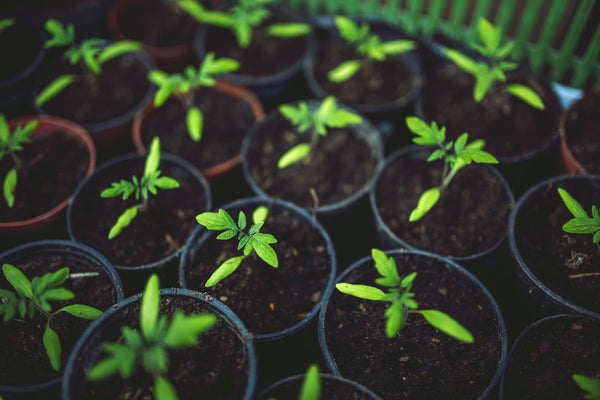Imagine how inviting your patio could be with some beautiful accent trees. Gardens and landscapes are now becoming smaller because of the limited outdoor space that comes along with today’s current real estate. As a result, Patio Trees make an excellent space-saving addition to your landscape.
Patio Trees will add intimacy and intrigue to your yard. Many also offer exquisite flowers, fruit, and a variety of bark colors to your manicured landscape. Due to limited space, planting trees in containers is becoming increasingly popular. As long as you have a porch, patio, or balcony, you can grow a variety of trees in large containers.
These trees can be used as a focal point in your yard or to frame door or entryways. So, how do you locate a tree that will suit your needs? This guide will help you learn how to select and care for trees that will thrive perfectly on your patio.
Selection
There are many different trees that make suitable Patio Trees. If your outdoor space is limited, it’s crucial that you choose your trees carefully. There are a range of possibilities that can make choosing the right tree for your garden a challenge.
Function
When selecting Patio Trees, remember the different functions the trees will provide in your yard. They can provide privacy, give shape and architectural design to your landscape and frame your yard. No matter which tree you select, make sure it provides interest in your garden.
Size and Growth
Truthfully, many beginner gardeners select trees that are too large for their landscape. So, it’s important to consider your tree’s mature size. If you are working with a small space, it’s also important to select trees that won’t grow too large or tall. Dwarf or miniature trees work best for small spaces.
While it’s important to consider the sizes of the trees, it’s also vital to consider the weight. Once the trees have soil and water inside their containers, they’ll be heavier. This may be important if the trees will have to be moved indoors during cold months or kept on balconies.

Dwarf Trees
Dwarf or miniature trees make excellent candidates for Patio Trees. These small trees are great because they do not develop large root systems that will quickly outgrow their containers, or disturb your patio or walkway. Dwarf varieties are smaller trees that offer the same quality as standard trees. If you select a flowering or fruiting tree, you will still get the same amount of full-sized blooms and fruits as that of a standard tree.
Dwarf trees can also be both single and multi-stemmed. Both styles of trees have their benefits. However, multi-stem trees often are a better choice because they can act as both trees and shrubs. This makes them an important asset in smaller spaces.
Selecting a Container
Keeping trees in containers makes it easier to move the trees around and makes them more suitable for small patios and rental properties. There are a wide variety of pots available in different shapes, styles, and materials.
Choosing the right container is just as important as selecting the right plants for your patio. You need to select a container large enough to house your tree’s root system. It should also be large enough that you are able to transfer the plant easily if the root ball begins to outgrow the pot.
Synthetic and other nonporous containers hold in moisture, whereas unglazed containers such as clay pots dry out faster. Plastic containers typically provide the easiest maintenance and are durable through any season.

Size
The size of the container also depends on the size of the plant. Most trees will come in a 1 to 5 gallon pot, depending on the variety and the nursery. If you purchase your tree in a nursery pot, it is best to also purchase a container that is one size larger.
Containers have limited space for the tree’s roots to grow. As a result, the container should be large enough that the root system can spread out, but not too large so that the tree is consumed by soil. Any tree that grows 20 or more inches per year should not be planted in a container. Additionally, if a tree will grow to be more than 10 feet once it matures, you should plant it in a large container.
Note: As your tree grows, it should be repotted every 2 to 3 years.
Drainage
No matter what type of container that you choose, make sure it has drainage holes. The holes only need to be large enough so that any excess water can drain out of the pot.
If you end up selecting a container that does not have holes, you can actually drill those holes yourself. Most decorative pots will not have drainage holes, and these are best used as a cover for plain pots.
Furthermore, self-watering containers offer many benefits. They provide a water reservoir where the trees roots have access to nourishment. These containers prevent the tree from being overwatered. Any additional water gets trapped in the attached side container. As a result, your tree’s nutrients are not flushed out of the container drain holes. Overall, these containers help promote healthy root growth.
Care and Maintenance
Patio Trees are best kept in a sunny spot in the yard, or by a large sunny window. Also, these cultivars often require fertilizing with a well-balanced tree fertilizer. Depending on the variety, this can be done in the spring during the growing season, or often in the late summer or fall. Flowering trees usually need to be fertilized after flowering, and fruit trees during their fruit swell.

Many fruit trees benefit from compost. However, it’s best to make sure they don’t dry out during hot or humid weather as this can harm flower and fruit production on certain trees.
Maintaining Size
Since the size of a tree is usually proportional to the size of its root system, planting in a container will ultimately restrict its size. However, if a tree does begin to outgrow its container, there are a couple of options. Depending on the variety, you may eventually be able to transplant the tree into the ground. If the tree cannot be planted outside, you can transplant it into a larger container.
Minor pruning can also be done to help maintain the desired shape and size of the tree. Pruning also helps to promote plant health and encourages fruit and flower production. It also helps improve the plant’s appearance, which is especially important in landscape design.
Pruning is also a preventative measure that can be taken to protect plants from disease. For younger trees, pruning helps train them to develop a stronger structure. However, be careful when pruning your plants. Many trees end up pruned improperly and have growth issues later.
Take care not to prune back the leader stem. You can also remove any branches that cross or grow back towards the center of the tree. Remove any multiple leader stems on conifers or any tree where only one leader is desirable.
But most trees actually need little to no pruning unless you are trying to shape the tree. You will likely only need to prune off any damaged or diseased shoots. When pruning fruit trees during the summer, you can prune all the previous new growth off to encourage fruit buds. It is also a good idea to prune fruit off a newly fruiting tree to get better quality fruit in the years to come, and prevent stressing the tree out.
Moving Patio Trees Indoors
When the temperatures start to cool, you may start thinking about bringing your Patio Trees inside. Depending on your zone, it may be best to bring the plants indoors once the temperatures consistently dip below 50 degrees. Prior to bringing any trees indoors, consider their health. Any trees that were struggling outdoors will not fare any better once inside.
Be sure to check your tree for any pest or fungus problems. If your tree does have pests, we recommend treating it two weeks prior to moving it indoors. Once the pests are under control, you can prep your plants for going inside.
Place your trees in a shady spot for two weeks in order to help them acclimate once indoors. If you want to bring a plant indoors that was planted in the ground, make sure to pot it a few weeks before bringing it indoors. Be sure to use potting mix and not ground soil. Ground soil will not drain well in the container and could possibly have insects inside it.
Before moving your plants indoors, be certain you have the right location for them. They will thrive best if placed near a window with bright sunlight coming inside. Patio plants also like high humidity. The air inside your home will likely be dry, especially when you have the heat running. If there is not enough moisture in the area, the foliage on your trees will become dry, crispy, and may even turn brown. You can use a spray bottle and mist the leaves daily in order to provide more humidity for your trees.





